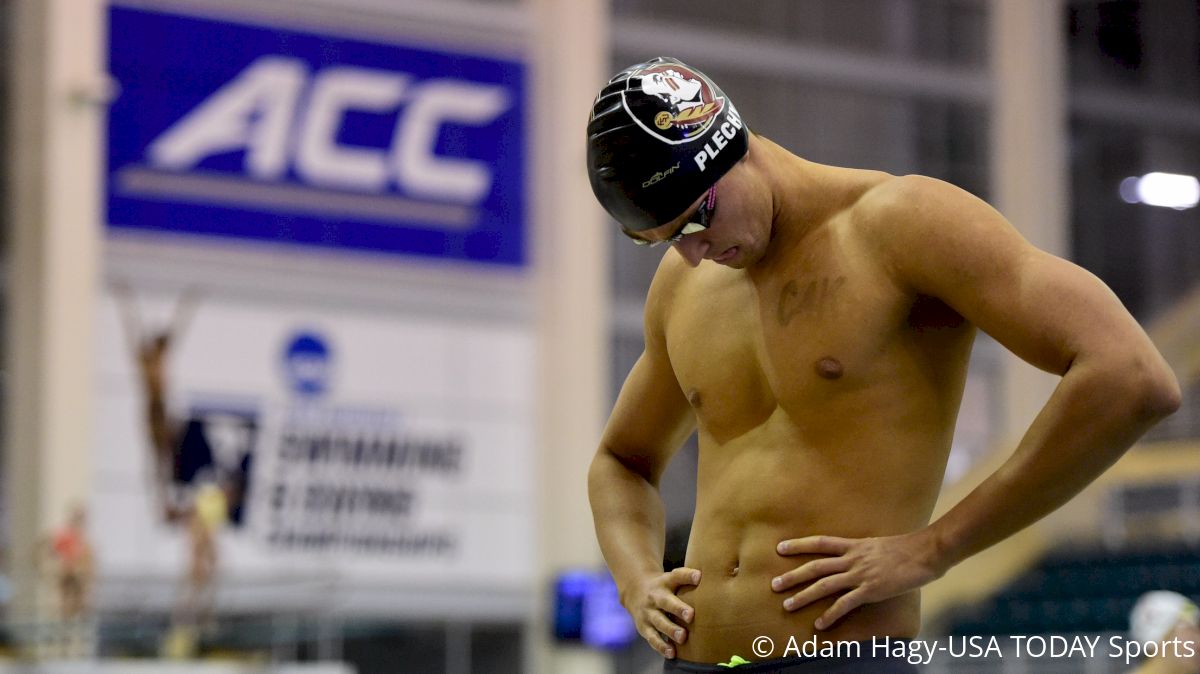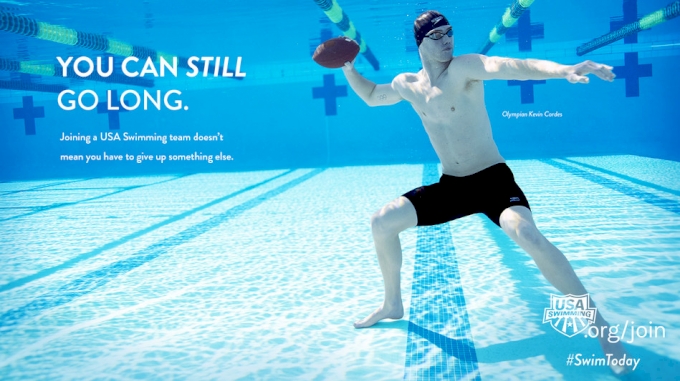Fixing Swimming's Burnout Problem Isn't That Simple
Fixing Swimming's Burnout Problem Isn't That Simple
The words “burned out” infiltrate the swimming vocabulary much more frequently these days.

The words “burned out” infiltrate the swimming vocabulary much more frequently these days. But as swimmers hang up their goggles and caps for good, the reason why isn’t quite as simple as one may think.
Often, sport specialization is blamed as the cause for a lack of love for swimming. According to a recent Wall Street Journal report, USA Swimming has stated the number of its competitive swimmers in the 10-year-old age group fell by almost 10 percent from 2013-16. Altogether, 40 percent of those swimmers who left the sport said it was too much of a time commitment.
In response, USA Swimming is working to address the issue right now through a new ad campaign showing young swimmers competing in other sports and by rolling out a modified entry-level membership program that demands less of swimmers.
FlexSwim, as USA Swimming is calling it, will allow swimmers from ages 5-18 to pay less and be demanded of less—only training a few times per week—while still letting them participate in two competitive meets per year. It’s a way to help swimmers who don’t want to specialize in the sport by encouraging them to become multi-interest athletes.
The aim is to keep youth athletes in the water and avoid as many burnouts as possible. Yet, there is much more to the puzzle than simply blaming years of participation as the cause, even if they were spent doing one sport.
Three different reasons come to mind that play a role in swimmers burning out of swimming. Thankfully, each scenario has a collaborative solution to getting the most of the circumstances.
Success Doesn’t Come Instantly
In an era of instant gratification, success still doesn’t come immediately. Like all sports, reaching swimming’s elite level requires a significant amount of work. Rarely does it hand out “get fast now” cards.
Youth sports are experiencing a new wave of thinking. Swimmers, parents, and even coaches are impatient with the process necessary to reach full potential. Thus, frustration ensues. And while frustration isn’t inherently bad, letting it force an early exit from the sport is.
Swimming success takes time, and in some cases that could mean years and years of built up time.
Whether a swimmer specializes or not, their goals will tell what type of commitment must be made. Even with FlexSwim, outlandish goals and expectations will still be set. A few practices a week anymore will rarely translate to the rapidly increasing expectations put on youth athletes.
With big ambitions, comes a larger time commitment. That doesn’t mean the swimmers needs to specialize in swimming but they do need to understand how to persist through struggle and frustration. It especially matters when times don’t return as expected.
To keep swimmers around, less isn’t necessarily more. The idea of instant success just needs to go. But that is a group effort between the swimmer, the coach, and the parents. The swimmer needs to understand the process and be open to the path their goals demand, knowing that the road could be longer or more strenuous than expected.
Coaches need to know their swimmers' strengths and weaknesses in order to properly develop them. If you don’t know your swimmer, it could lead to disaster. The same applies to parents. Too much pressure destroys a swimmer's confidence. Just because they are good as an age-grouper doesn’t mean it will translate to an Olympic gold medal or college scholarship instantly.
Knowing the swimmer goes a long way. It generates a game plan within itself, giving a guide as to how often or to what extent that swimmer should train.
Time and trusting the process is the way to get there. Without it, burnouts are surely to come.

Physical Potential Has Been Reached
A sad reality in sports is sometimes the body simply can’t keep up. That takes a toll on a swimmer's mind, especially when they still love what they do. As opposed to youth swimmers quitting, burnouts here are seen with older swimmers.
Every person develops differently—it makes us all human. Time and training plateaus are common, though they aren’t a definite product of specializing as a swimmer, as USA Swimming's new membership program might suggest.
Physical plateaus can be reversed, although it is difficult. And unfortunately, sometimes there is nothing that can turn the inevitable around. The body just isn’t what it once was.
The burnout comes when frustration with the body's inability to keep up overtakes the love for the sport. College swimming experiences this the most. Growing and changing hits swimmers hard at this point.
The body doesn’t allow the same type of training it once did—that translates to times slipping. It’s much harder for a 20-year-old to crank out yardage like a 15-year-old.
A willingness to adapt is what keeps the post-grads and professionals going. They adjusted to the changes. That idea isn’t limited to them but major changes aren’t a simple task. Coaches and swimmers together have to be ready to make the change.
Complete overhauls can salvage a career and avoid complete burnouts. Although, the times still may not be the same, success can come from it.
Instead of No Love, New Love
Those leaving the pool for good say that they hate the sport. For young swimmers, it’s understandable. But for experienced swimmers, is it really hatred or has the swimming been replaced with a new love?
So often, swimmers experience a change of heart around a major turning point. Transitioning from junior high to high school or advancing in a different activity, a better option to swimming has come along. At that point, swimming is replaced with something else.
In high school, those other options are friends, new sports, or simply the pressures of school, to name a few. A lifelong swimmer reaches high school and discovers a love for volleyball or show choir. It changes what they want to spend their time doing.
These swimmers enjoy their new or different opportunities more than swimming, thus lessening the passion contributed toward the water. Down the road, it can be replaced altogether. At that point, they either quit or continue on miserably.
Sticking with the theme, adjustments can be made to keep swimming in the picture. Changing the amount of swimming or level of swimming isn’t equal to burning out of the sport. Stepping away from club swimming to just do high school isn’t bad as long as the swimmer understands the sacrifices that come with it.
FlexSwim makes sense for swimmers experiencing the change of heart. They don’t want to give it up altogether but their focus is elsewhere. A less intense membership may be the best option. In the end, it’s all about understanding the situation on a swimmer-to-swimmer basis.